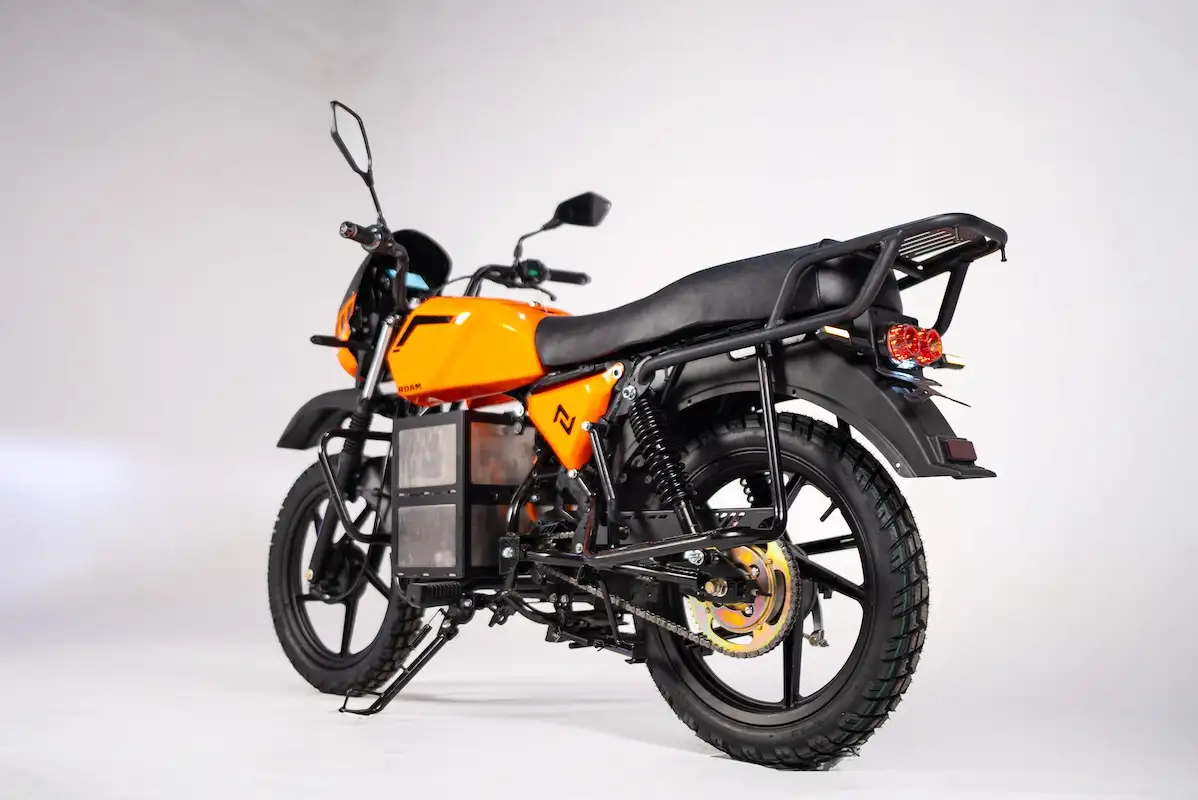Roam has officially launched the Generation 2 Roam Air, a next-generation electric motorcycle designed with extensive input from boda boda riders. The upgraded model includes over 40 practical enhancements and has been rigorously tested across both urban and rural terrains.
Designed and engineered entirely in-house by Roam, the Generation 2 Roam Air reflects a deep commitment to local innovation and manufacturing. With Kenya’s more than 3 million boda boda riders sustaining an estimated 5 million livelihoods nationwide (UN data), the new model directly addresses the economic and practical needs of this vital sector.
Key Improvements
- Lighter Weight: 1 kg lighter than its predecessor, improving battery efficiency and overall handling.
- Reinforced Frame: Now supports up to 240 kg (20 kg more), built to endure Kenya’s varied road conditions.
- New Battery Compartment: A lockable single-door design deters theft and simplifies battery swaps.
- Enhanced Durability: Improved weather resistance, rust protection, and waterproofing for key components.
- Simplified Cabling & Lighting: Upgraded electronics, lighting systems, and mechanical features to better withstand daily use.
- Comfort Features: Redesigned footrests, reshaped seat, and a stronger rear carrier to support both riders and passengers.
Roam has increased local production of critical components to 36%, including:
- Body panels
- Wire harness and connectors
- Battery compartments
- Mechanical auxiliaries
- Storage units
This strategic move shortens the supply chain, lowers maintenance costs, and helps grow Kenya’s clean-tech sector by creating more local jobs.
Under Kenya’s Legal Notice 112, manufacturers that localize 11 key components qualify for the Duty Remission Scheme (DRS). Roam’s Generation 2 far exceeds this with over 40 locally produced parts, including plastic, metal, and electronic elements.
As an Original Equipment Manufacturer (OEM), Roam owns its designs and tooling, allowing for greater value addition and long-term affordability.
Monicah Mwalo, Roam’s Production Manager, emphasized community engagement:
“We didn’t just update a few features—we rethought the motorcycle with input from the people who use it every day. This version is grounded in Kenyan realities.”
Joel Amboka, a boda boda rider from Nairobi, shared his experience:
“Before Roam, most of my money went to petrol and repairs. Now I charge at home, spending under KES 200, and ride all day. It’s made a real difference in my income. I can also easily run my daily activities thanks to the strong frame.”
Also Read: ARC Ride Secures $5 Million Investment from BII



